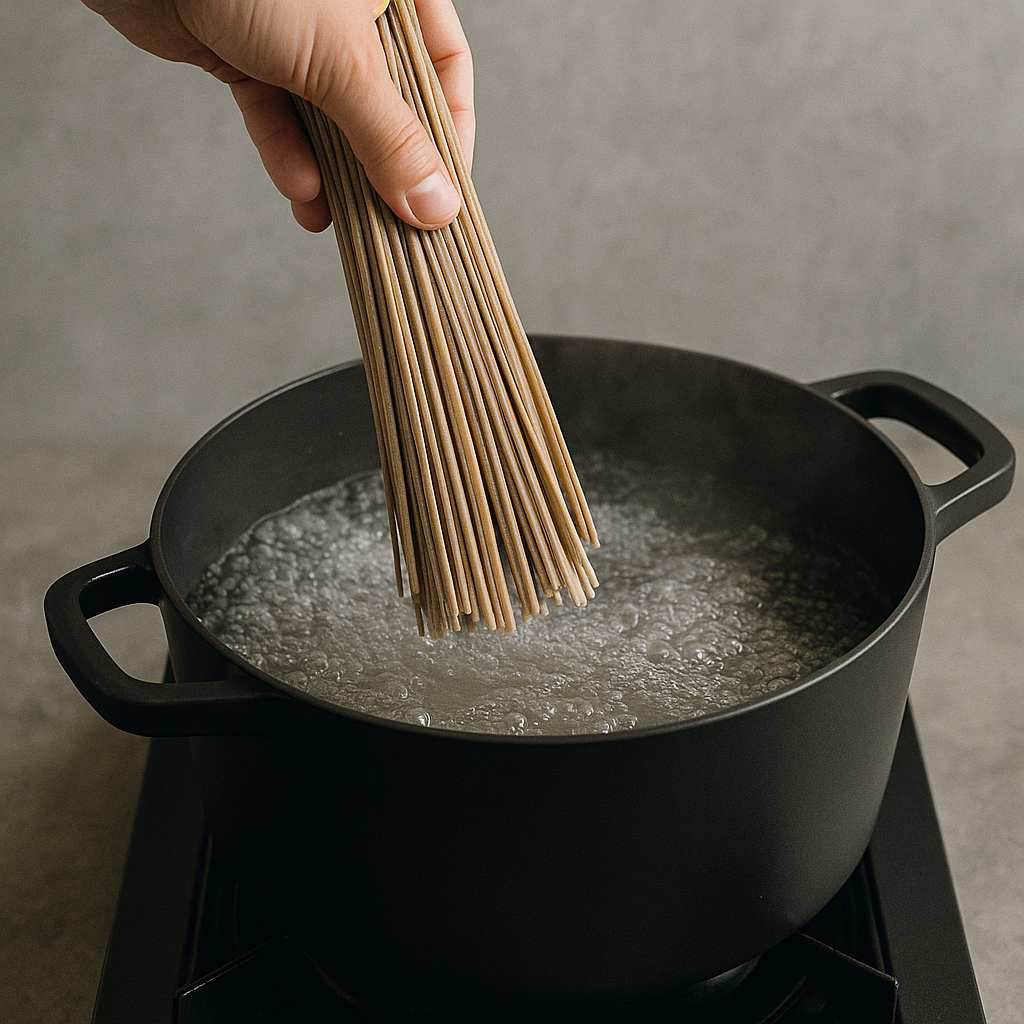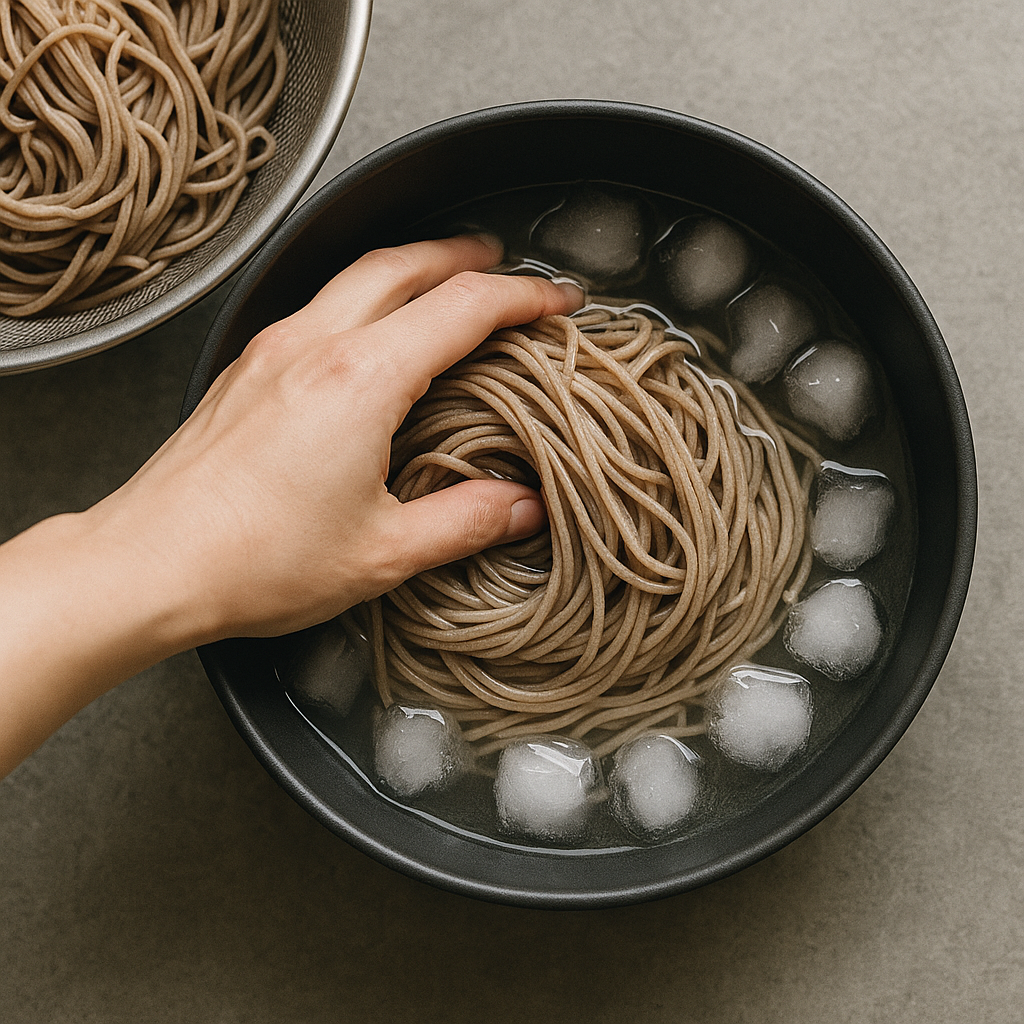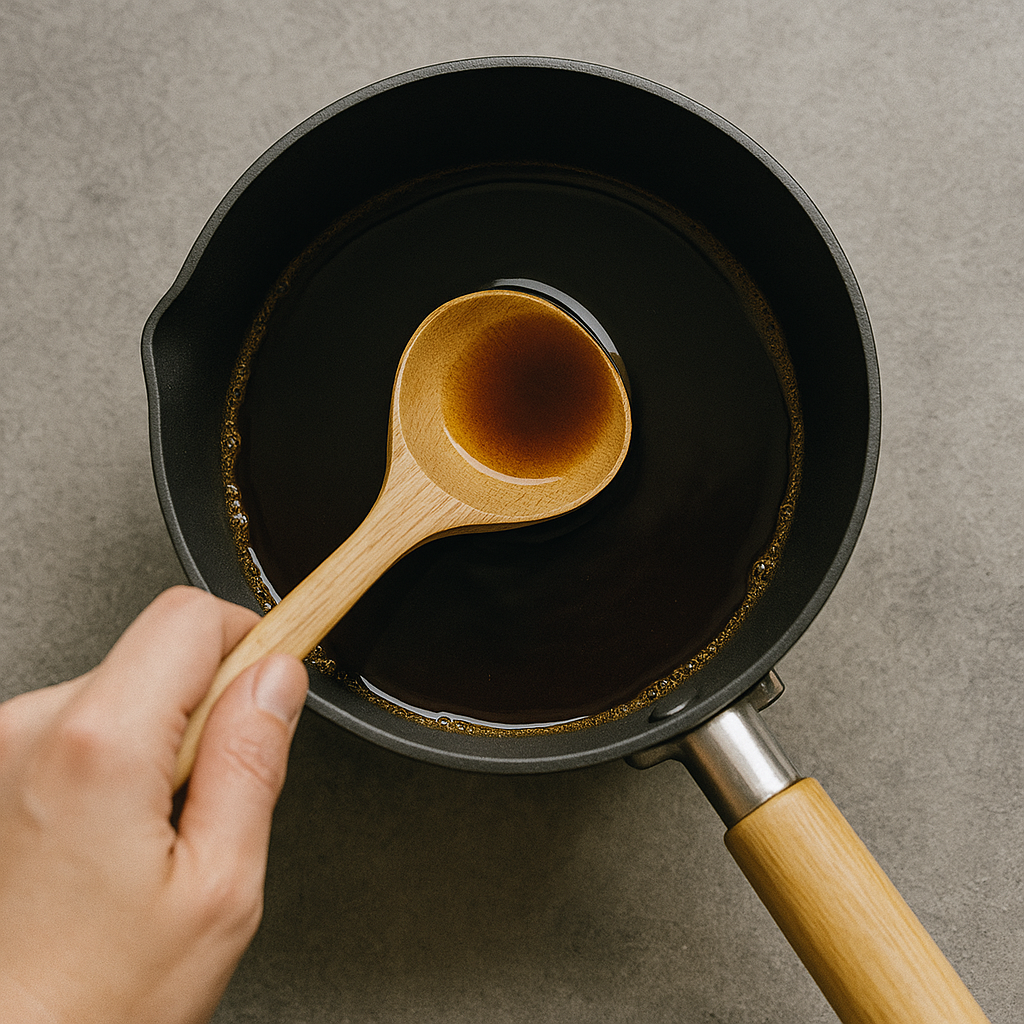Japanese Zaru Soba (Cold Soba Noodles with Dipping Sauce)
Zaru Soba (ざるそば) is the ultimate Japanese summer dish—refreshing, simple, and elegant. These cold buckwheat noodles are served on a bamboo tray (zaru) and dipped in a savory, umami-rich soy-based sauce (mentsuyu) for every bite. It’s light yet satisfying, and ready in minutes.
Whether you’re cooling down on a hot day or craving something minimalist and delicious, zaru soba is your go-to. It’s healthy, naturally vegan, and makes you feel like you're dining at a Tokyo soba shop—even if you're just in your kitchen. So cook it already!
Why You’ll Love This Zaru Soba
Cool and refreshing – perfect for warm weather
Quick and easy – ready in 10 minutes
Healthy and light – made with buckwheat, low in calories
Customizable toppings – add wasabi, scallions, nori, or grated daikon
Ingredients:
For the noodles:
200g dried soba noodles (100% buckwheat or buckwheat-wheat blend)
Ice water (for chilling)
For the dipping sauce (mentsuyu):
1 cup dashi stock (or use instant dashi powder + water)
1/4 cup soy sauce
1/4 cup mirin
Optional: 1 tsp sugar
Toppings (all optional but highly encouraged):
Chopped green onions
Wasabi
Grated daikon radish
Shredded nori (roasted seaweed)
Toasted sesame seeds
How to Make Zaru Soba
1. Boil the Soba. Bring a pot of water to a boil (no salt needed). Add soba noodles and cook according to the package—usually 5–7 minutes. Stir occasionally to prevent sticking.
2. Chill the Noodles. Drain and immediately rinse the noodles under cold running water to stop the cooking. Gently rub the noodles with your hands to remove excess starch. Then dunk them in a bowl of ice water to chill completely. Drain again and set aside.
3. Make the Dipping Sauce. In a small saucepan, combine dashi, soy sauce, mirin, and sugar (if using). Bring to a gentle simmer, then let it cool. Pop it in the fridge for extra chill points.
4. Plate & Garnish. Pile the soba noodles onto a bamboo mat or plate. Top with shredded nori. Pour dipping sauce into individual cups. Serve with wasabi, green onions, and daikon on the side so everyone can customize.
5. Slurp Away. To eat, take a small bundle of noodles, dip into the sauce, and slurp it like you mean it. It’s not rude—it’s the Japanese way!
Pro Tips:
Rinse soba thoroughly – this removes excess starch and keeps the noodles springy
Chill everything – cold noodles, cold sauce, cold toppings for max refreshment
Don’t overcook – soba noodles go mushy fast, so check early
Use tsuyu concentrate if you want a shortcut (just dilute with water or dashi)
Support this site by purchasing through Amazon affiliate links.
Kitchen Tools We Recommend
Bamboo Zaru Soba Tray: Traditional bamboo tray that enhances presentation and helps drain noodles. Buy on Amazon
Fine Mesh Strainer Set: Perfect for rinsing soba under cold water without breaking the noodles. Buy on Amazon
Donabe Clay Pot (Optional): Traditional Japanese pot if you want to heat dashi the authentic way. Buy on Amazon
Chopsticks Set: Elegant and reusable chopsticks to complete the experience. Buy on Amazon
Small Ceramic Sauce Dishes: Ideal for serving mentsuyu dipping sauce and condiments. Buy on Amazon
Ingredients We Recommend
100% Buckwheat Soba Noodles: Authentic soba noodles made with pure buckwheat. Buy on Amazon
Hon Tsuyu Dipping Sauce (Concentrated): Classic mentsuyu flavor with deep umami notes. Buy on Amazon
Kizami Nori (Shredded Seaweed): A must-have topping for authentic zaru soba. Buy on Amazon
Wasabi Paste Tube: A little heat goes a long way. Buy on Amazon
Japanese Grater for Daikon: Perfect for fresh grated daikon radish. Buy on Amazon
Insight on Zara Soba
Zaru Soba (ざる蕎麦) is a classic Japanese dish made with cold soba noodles (buckwheat noodles) served on a bamboo tray (zaru) and paired with a savory dipping sauce called mentsuyu. It’s light, it’s hydrating, and it’s one of those “less is more” dishes that feels incredibly Zen.
It’s been around for centuries, rooted in Edo-period Japan, when soba became a staple in Tokyo (formerly Edo) for its fast cooking time and balanced nutrition. Today, it’s still beloved across Japan—whether at train station noodle shops or upscale restaurants.
Zaru Soba is one of those dishes that proves food doesn’t have to be complicated to be amazing. It’s got that clean umami hit, the textural pleasure of cold noodles, and the ritual of dipping that makes each bite feel intentional. Whether it’s a solo lunch or a light dinner with friends—this one always cools, calms, and satisfies.
FAQs
What’s the difference between soba and udon?
Soba is made from buckwheat (nutty, thin, gluten-light), while udon is wheat-based (thick, chewy, soft).
Is soba gluten-free?
Some soba noodles are 100% buckwheat (gluten-free), but many are mixed with wheat. Check the label!
Can I meal prep this?
Yes—cook the noodles and make the dipping sauce ahead of time. Just chill everything and assemble before serving.





